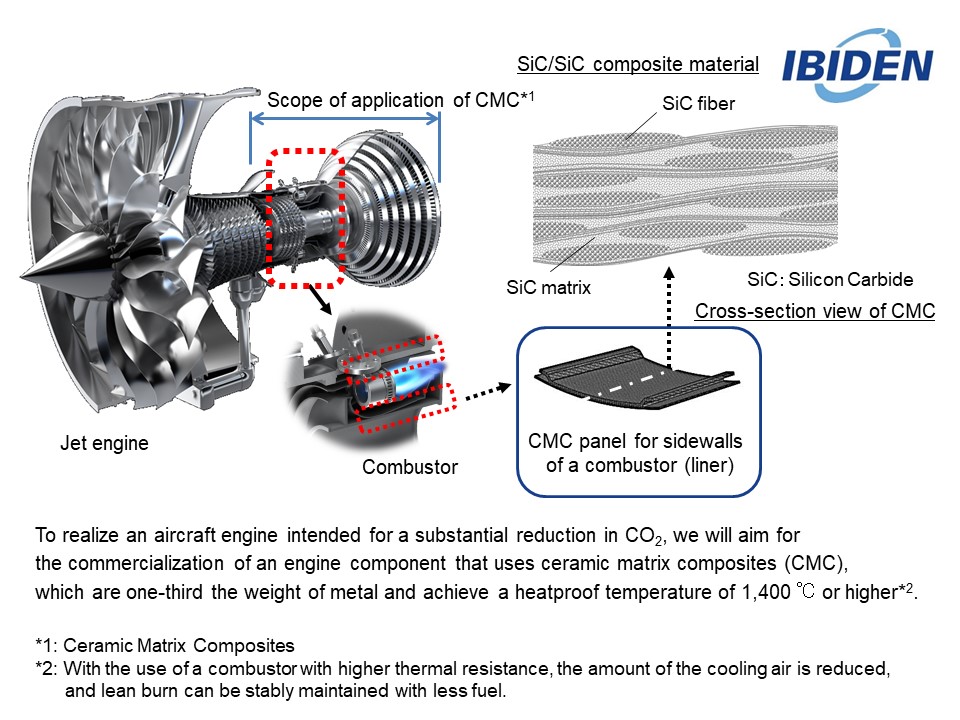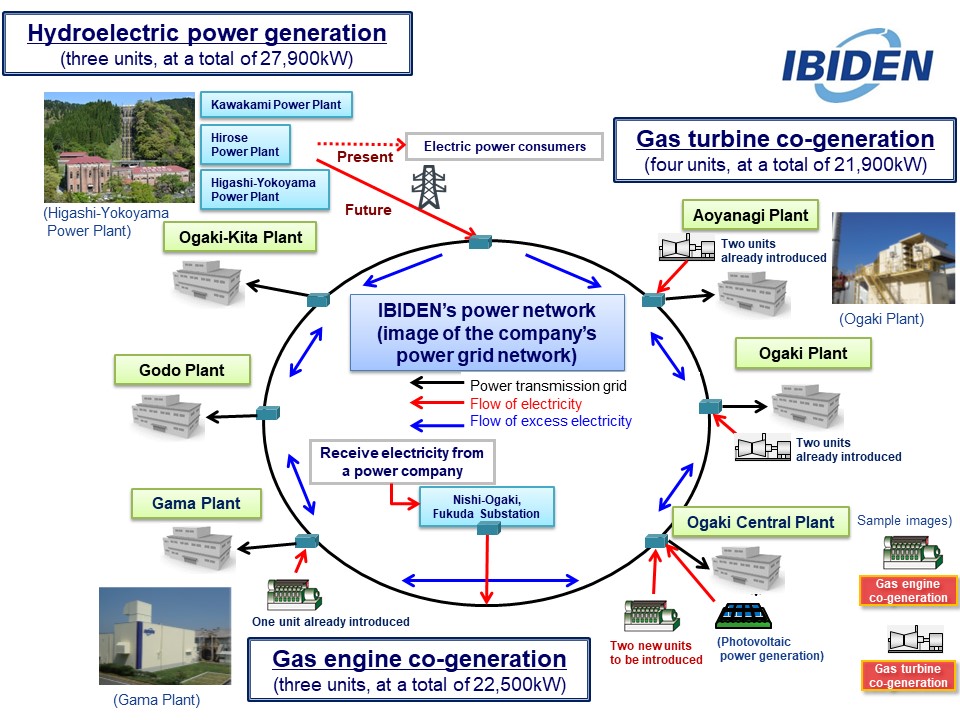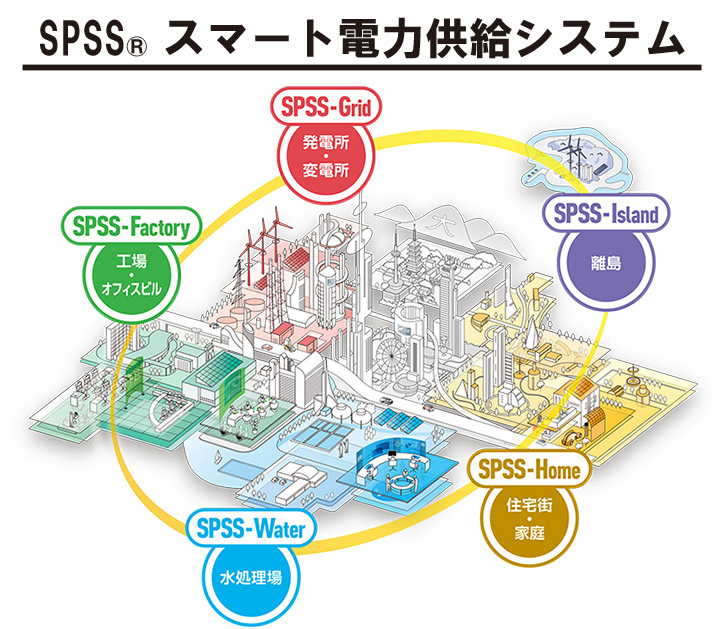Improvement of aircraft engine fuel consumption with light and high-heat-resistant ceramic matrix composites
IBIDEN CO., LTD.
Outline
In order to reduce CO2 emissions by improving the fuel efficiency of an aircraft, it is essential to enhance high-temperature heat resistance of engine parts, which is key point to reducing the weight of the engine and to enhancing combustion efficiency. IBIDEN will advance the development of SiC/SiC composite materials with excellent reliability and durability, toward the commercialization of an engine parts made of ceramic matrix composites (CMC*1), which are about one-third the weight of metal and have high heat resistance of 1,400°C-class that is considerably higher than that of metal (1,000°C or lower), made possible by using our high-temperature ceramic film formation technology and graphite manufacturing technology as our core technologies. Furthermore, we will contribute to achieving a balance between the world economy and environmental protection by spreading our technology of composite materials.
Description
In the aircraft industry, which has an increasing market need for enhancing fuel efficiency, environmental compatibility and safety, there is a need for aircraft engines to improve economy based on high efficiency while ensuring reliability and safety, and to improve as environmental performance to respond to the strengthening of regulations.
① Contribution to a lighter jet engine
Reducing the weight of a jet engine itself is also one of the issues for the improvement of aircraft fuel efficiency. Although ceramics are excellent in their lightweight feature compared with metal, their weak point is toughness. We will contribute to adding an effect to improve fuel efficiency to the engine through the reduction of the engine’s weight by overcoming the weakness with CMC*1, a composite material strengthened with ceramic fibers and by commercializing it as a CMC engine component.
[Target achievements] About one third lighter and more durable compared with a conventional metal engine parts
② Improvement of fuel efficiency with a high-heat resistant engine combustor
We will contribute to the reduction of energy consumption and CO2 emissions as well as the mitigation of exhaust gas emissions by improving the fuel consumption of aircraft. To realize highly efficient engine combustion (fuel-efficiency) for the reduction of CO2 emissions, it is necessary to maintain stable lean burn with less fuel by reducing the volume of cooling air through a high-heat-resistant combustor. To this end, we aim for the application of a SiC/SiC composite material (Composite material with silicon carbide (SiC) fiber whose base material is SiC), which has a heat resistance temperature higher than that of metal and has been combined with fibers made of the same material. We will contribute to achieving a balance between higher efficiency and improvement of environmental performance through an application of a high-heat-resistant SiC/SiC composite material liner to the combustors.
[Target achievements] SiC/SiC ceramic matric composite with a heat resistance temperature of 1,400°C
Furthermore, for components of combustors made up of CMC, we will respond to the enhancement of the maintainability by adopting a division structure that makes replacement of only damaged parts possible. For commercialization of CMC materials for components of combustors, we will realize high-rate and low-cost production with our high-temperature ceramic film formation technology and graphite manufacturing technology as its core.
Installing and equipping the jet engines using these combustors with CMC components in aircraft, we will contribute to the reduction of CO2 emissions and energy consumption on the basis of the improvement of fuel efficiency of aircraft, as well as to the mitigation of exhaust gas emissions. Moreover, we will contribute to achieving a balance between the world economy and environmental protection through our effort to advance high value-added products in various fields by spreading the technology in other industrial fields.
*1 CMC: ceramic matrix composites
Partner(s)
Cooperation and collaboration with Kawasaki Heavy Industries, Ltd.
Other Innovation Challenges
Introduction of high-efficiency co-generation and establishment of our in-house smart grid
IBIDEN CO., LTD.
Similar Innovation Challenges
Achieving net zero carbon emissions from paint finishing processes
Taikisha Ltd.
Activities for reducing GHG of business operations in Nissin Electric Group
Nissin Electric Co., Ltd.









-1人工光合成技術.jpg?id=2&tid=759&imageNumber=1)